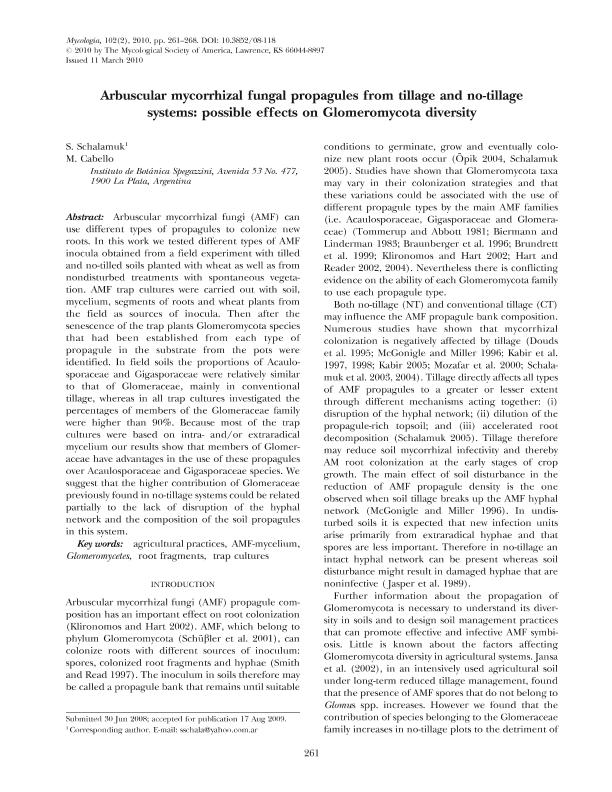Artículo
Arbuscular mycorrhizal fungal propagules from tillage and no-tillage systems: Possible effects on Glomeromycota diversity
Fecha de publicación:
03/2010
Editorial:
Allen Press Inc.
Revista:
Mycologia
ISSN:
0027-5514
Idioma:
Inglés
Tipo de recurso:
Artículo publicado
Clasificación temática:
Resumen
Arbuscular mycorrhizal fungi (AMF) can use different types of propagules to colonize new roots. In this work we tested different types of AMF inocula obtained from a field experiment with tilled and no-tilled soils planted with wheat as well as from nondisturbed treatments with spontaneous vegetation. AMF trap cultures were carried out with soil, mycelium, segments of roots and wheat plants from the field as sources of inocula. Then after the senescence of the trap plants Glomeromycota species that had been established from each type of propagule in the substrate from the pots were identified. In field soils the proportions of Acaulosporaceae and Gigasporaceae were relatively similar to that of Glomeraceae, mainly in conventional tillage, whereas in all trap cultures investigated the percentages of members of the Glomeraceae family were higher than 90%. Because most of the trap cultures were based on intra-and/or extraradical mycelium our results show that members of Glomeraceae have advantages in the use of these propagules over Acaulosporaceae and Gigasporaceae species. We suggest that the higher contribution of Glomeraceae previously found in no-tillage systems could be related partially to the lack of disruption of the hyphal network and the composition of the soil propagules in this system.
Archivos asociados
Licencia
Identificadores
Colecciones
Articulos(CCT - LA PLATA)
Articulos de CTRO.CIENTIFICO TECNOL.CONICET - LA PLATA
Articulos de CTRO.CIENTIFICO TECNOL.CONICET - LA PLATA
Citación
Schalamuk, Santiago; Cabello, M.; Arbuscular mycorrhizal fungal propagules from tillage and no-tillage systems: Possible effects on Glomeromycota diversity; Allen Press Inc.; Mycologia; 102; 2; 3-2010; 261-268
Compartir
Altmétricas




